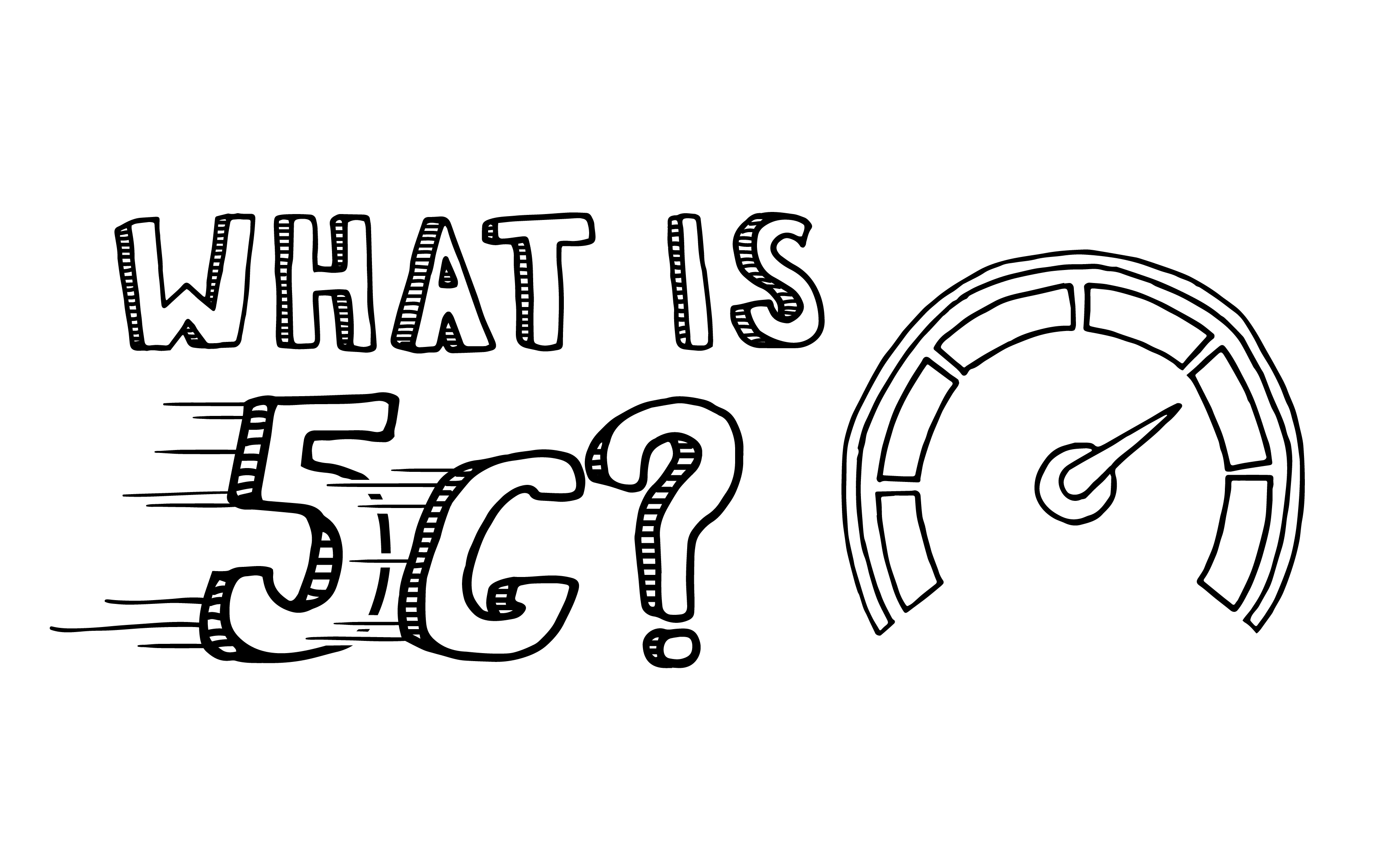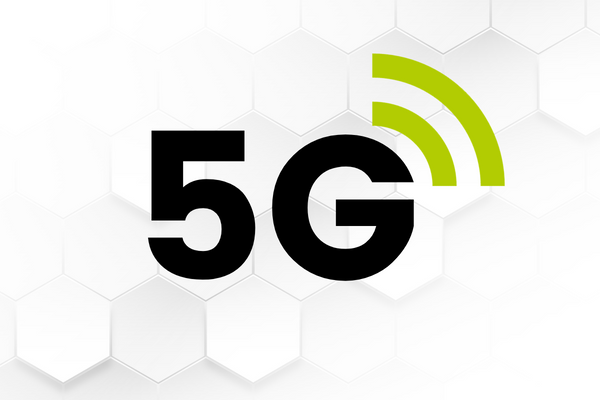Payment methods accepted

Understanding 5G: How It Works, Its Benefits, Use Cases, and Comparisons to 4G/LTE
Written by Don Schultz, trueCABLE Senior Technical Advisor, Fluke Networks Copper/Fiber CCTT, BICSI INST1, INSTC, INSTF Certified
No doubt, by now you have heard of 5G. One way or the other, someone has an opinion on it. Quite often it is the center of conspiracy theories, often repeated as fact. This has led to unfortunate events involving vandalism and hysteria. 5G has also been subjected to a great deal of hype and lofty promises, which no doubt pleases smartphone manufacturers who will see record sales as people clamor to jump onto a faster network.

Perhaps it would help if we took a dive into what 5G is, how it works, and how it compares with previous technologies!
What is 5G and how does it work?
5G means 5th Generation Wireless. 5G, at its most basic level, is just like any other wireless technology. You have radios that transmit to and receive cellular data from your mobile device, and this data is then passed through a network backbone either via high speed dedicated wireless backhaul or physical cabling (typically fiber optic cables).
5G Main Benefits and Use Cases
The main benefits to 5G are:
- Potentially faster upload and download speeds
- Much lower latency
- Ability to connect a massive amount of devices at once per given radio
The use cases for 5G apart from the most obvious one (mobile phones) are:
- 5G home Internet. Essentially, truly wireless home Internet with the speed and latency of traditional coaxial or fiber wired connections.*
- 5G business Internet with 5G network technology deployed instead of traditional wired or Wi-Fi LANs (local area networks)*
- Smart cities (parking sensors and congestion monitoring)
- Remotely controlled and managed factories (robots, lots of robots)
- Automated vehicles (autonomous garbage trucks!)
- Improved sporting venue connectivity and sports streaming
- Improved virtual reality streaming (remote medical procedures)
- Industrial applications
* In order to leverage the speeds and latency required for a drop in replacement of traditional home or business LANs, mmWave is all but required.
How 5G differs from 4G/LTE

5G is different in a lot of ways when compared to 4G/LTE. Some of those ways are:
- Greatly improved data encoding, called OFDM (much lower latency than 4G/LTE)
- Ability to use a wide range cellular frequencies and combine them together (more flexible than 4G/LTE)
- Ability to use the newer mmWave frequencies that offer very high speed data with multiple combined channels of up to 100MHz each (potential for far faster upload and download speeds than 4G/LTE)
- Ability to connect to a lot more devices at once (4G/LTE is 4,000 devices per square kilometer where 5G is 1,000,000 devices per square kilometer)
So, 5G allows a great deal of connection flexibility as it can operate across all available cellular (old and new) frequencies. Essentially, 5G is capable of combining three different frequency spectrums into one--leveraging existing infrastructure. These frequencies are called:
- Low (Existing)- Frequencies below 2GHz. This means very old TV and cellular frequencies. Individual channel width is between 5MHz and 20MHz. The idea is for 5G to operate over long distances in rural areas using these lower frequencies, but the speeds are more like lower speed 4G/LTE.
- Middle (Existing) - 2 to 10GHz range. Middle covers most of the current cellular frequencies in use. Transmission range is about ½ mile and these frequencies offer wider ranges for faster data transmission. This is where most 5G traffic is being handled. It also happens to be where most 4G/LTE traffic is handled as well. Channel width is typically 20MHz, but some are 100MHz for mid-band 5G use.
- High (New) - 20 to 100GHz range. “High” is really the new part of 5G. These frequencies are called millimeter-wave (mmWave) and use channels that are 100MHz wide. Although this spectrum of frequencies is extremely roomy and allows for ultra high speeds, the transmission distance is a paltry 800 feet from a 5G tower. High frequency 5G is often seen in sports venues and densely populated cities where there are places to mount the 5G radios alongside the existing 4G radios. 4G/LTE does not operate on mmWave.
Note: Channel width defines how much data can be transmitted at once and therefore defines how fast your uploads and downloads are. The narrower the channel width, the slower the speeds. This can be overcome, to an extent, by combining multiple channels in the same frequency band to increase speed. Your smartphone will do this automatically.
5G vs 4G/LTE Speed Comparison
The comparison chart below shows the ideal and best possible speed for each technology. Considering that 5G may be combined with narrower channels on lower frequency bands, what speed you really end up with is dependent on:
- Where you happen to be located at the moment
- What type of smartphone you have (not all phones have the same 5G implementation)
- What carrier you use
- How many other users are around you
So, if you are asking yourself “What speeds does 5G deliver?” The answer is a moving target.

Remember, these numbers are under ideal conditions!
However, for the time being, 5G requires 4G/LTE to function well. When your smartphone connects to your wireless carrier, you may see a “5G” icon, but your smartphone is likely combining previously used narrower 4G/LTE channels with the new wider 5G channels but you are none the wiser. Your wireless carrier will split these channels between 4G/LTE and 5G dynamically upon demand, a technology called DSS or Dynamic Spectrum Sharing. The dynamic splitting is why 4G is not going away anytime soon, as often 4G/LTE signaling is required prior to a “5G” connection being established.
mmWave vs Sub-6 GHz Frequencies
Your smartphone may establish a 5G connection, but it may not be using the super duper mmWave frequencies to do it. In fact, unless you are in a large population center or sports venue your 5G signal is likely riding over narrower sub-6 GHz frequencies that 4G/LTE uses. You get the lower latency benefits of 5G OFDM encoding, but not necessarily the higher speeds as only a few channels are 100MHz wide in this frequency range. The rest are usually 20MHz.
Is 5G Safe?

Yes. Your average microwave oven (theoretically speaking) poses a much greater health threat to you than 5G or any other mobile wireless technology.
There are some extremely off-the-wall conspiracy theories around this not-so-new technology. Historically, weird and unusual theories based upon new technology are often spun by folks who don’t have all the facts about the technology and have a fear of the unknown. Quite a bit of misinformation about any number of subjects is out there on the Internet, and if it should get repeated enough times it seemingly becomes a “fact”. It seems, though, that 5G in particular has been the subject of an unending amount of “crazy”. Why? Well, I blame social media and people with nothing better to do than sit home during the COVID pandemic and “imagine up” problems that are not there. Maybe trying to solve imaginary problems that are seemingly more in your control was a coping mechanism? Who knows.
So now you know about 5G and what it does and does not do. I do have a favor to ask of those that keep stating the “end of the world is nigh” every time a new technology gets released. Please do these tasks in this order:
- Back away from the computer
- Get out of the jammies
- Emerge from your parent’s basement
- Get some sun and talk with other people...please!
With that, I say HAPPY NETWORKING!
trueCABLE presents the information on our website, including the “Cable Academy” blog and live chat support, as a service to our customers and other visitors to our website subject to our website terms and conditions. While the information on this website is about data networking and electrical issues, it is not professional advice and any reliance on such material is at your own risk.



























